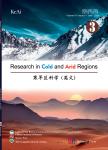Artificially frozen ground and related engineering technology in Japan
Artificially frozen ground and related engineering technology in Japan作者机构:Cryosphere Engineering LaboratoryTokyoJapan
出 版 物:《Research in Cold and Arid Regions》 (寒旱区科学(英文版))
年 卷 期:2021年第13卷第2期
页 面:77-86页
核心收录:
学科分类:0830[工学-环境科学与工程(可授工学、理学、农学学位)] 0709[理学-地质学] 08[工学] 081401[工学-岩土工程] 0818[工学-地质资源与地质工程] 0708[理学-地球物理学] 0815[工学-水利工程] 0705[理学-地理学] 0706[理学-大气科学] 0813[工学-建筑学] 0814[工学-土木工程]
基 金:University of Alaska Fairbanks, UAF Scientific Committee on Antarctic Research, SCAR
主 题:artificial ground freezing frost heave frozen ground engineering
摘 要:Since the 1970 s, frozen ground has been developing near the Tokyo Bay area around liquefied natural gas(LNG) inground storage tanks. For disaster prevention purposes, the tanks are constructed below the ground surface. Since the temperature of the liquid stored in the tanks is -162℃ the soil surrounding the tanks freezes. Since this frozen ground has existed for almost half a century, we have permafrost near Tokyo. The development of artificial frozen ground may cause frost heaving, resulting in frost heave forces that may cause structural damage of adjacent LNG in-ground storage tanks.Therefore, the demand for frozen ground engineering increased and consequently we now have advanced technology in this area. Fortunately, we use this engineering technology and artificial ground freezing for civil engineering, especially in big and crowded cities like Tokyo. This paper provides a summary of the testing apparatus, test methods, and assessment methods for frost heaving.



